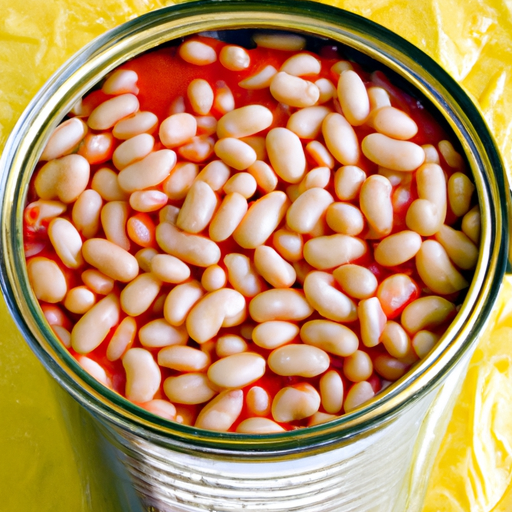Discovering the Versatility of Canned Butter Beans
If you consider yourself a food enthusiast, you’re probably on the lookout for exciting ingredients that can bring a touch of uniqueness to your kitchen creations. Enter canned butter beans - a humble legume that deserves a spot in every pantry. In this blog post, we’ll explore the world of canned butter beans, including their taste, common uses, nutritional value, and some intriguing historical tidbits.
A Taste Worth Savoring
Canned butter beans, also known as lima beans, offer a mild and delicate taste that pairs well with a variety of flavors. Their subtle, creamy texture lends itself to a range of culinary applications, making them a versatile ingredient for both savory and sweet dishes. Whether mixed in a hearty casserole or pureed into a delightful hummus, butter beans effortlessly infuse a velvety smoothness into every bite.
From Soups to Salads: Cooking with Butter Beans
The adaptability of canned butter beans makes them incredibly popular in the culinary world. Here are a few creative ways to enjoy these beans:
1. Soups and Stews
Including canned butter beans in soups and stews adds depth and creaminess to your favorite recipes. Their neutral flavor allows them to absorb the flavors of the dish while simultaneously enhancing the overall texture.
2. Salads and Sides
Butter beans are also a fantastic addition to salads, bringing a burst of creaminess and protein to the mix. Tossed with vibrant greens, roasted vegetables, and a tangy dressing, they create a satisfying and wholesome meal.
3. Dips and Spreads
Pureeing butter beans creates a luscious base for dips and spreads. Combined with garlic, lemon juice, and some herbs, they transform into a delectable hummus-like dip, perfect for dunking your favorite veggies or spreading on crackers.
4. Curries and Casseroles
Given their ability to hold their shape during cooking, butter beans lend themselves nicely to curries and casseroles. Infused with fragrant spices and aromatic herbs, they become a hearty and satisfying component in these comforting dishes.
Nutritional Value: A Powerhouse of Goodness
In addition to their culinary versatility, canned butter beans offer numerous nutritional benefits. Packed with fiber, protein, and essential vitamins and minerals, they contribute positively to a balanced diet. Some key nutritional highlights include:
- Fiber: Butter beans are an excellent source of dietary fiber, aiding digestion and promoting gut health.
- Protein: With a considerable protein content, butter beans provide a plant-based protein alternative for vegetarians and vegans.
- Vitamins and Minerals: These beans are particularly rich in folate, magnesium, potassium, and iron, supporting various bodily functions and promoting overall well-being.
A Brief Historical Insight
Butter beans have a fascinating historical background. Although their exact origins are uncertain, it is believed that Native Americans cultivated these legumes long before the arrival of Europeans. The beans were famously introduced to European settlers in the early 16th century during their exploration of the New World.
Bountiful Butter Beans: A Joy to Cook With
Canned butter beans are an ingredient that invites culinary exploration and inspires creativity in the kitchen. From their delicate taste and adaptability to their exceptional nutritional profile and intriguing history, there’s no doubt that butter beans deserve a place in your pantry. So, why not grab a can of butter beans and embark on a delectable journey of culinary discovery? Your taste buds will thank you!
Note: When using canned butter beans, always rinse them thoroughly before incorporating them into your recipes to remove excess sodium and maintain their natural flavors.
Disclaimer: This blog post is for informational purposes only and should not be considered medical advice. If you have any dietary concerns or allergies, please consult a healthcare professional.
Canned Butter Beans
Origin and Common Names: Butter beans, also known as Lima beans, are native to South America. They are named after the capital city of Peru, Lima. These beans were spread throughout the world by explorers in the 16th century.
Common Uses: Canned butter beans are versatile and commonly used in a variety of dishes. They are frequently used in soups, stews, casseroles, and salads. They can also be mashed or pureed to create dips or spreads.
Nutritional Benefits: Butter beans are a good source of plant-based protein, dietary fiber, and minerals such as iron, magnesium, and potassium. They are also low in fat and cholesterol. The high fiber content in butter beans can help promote a healthy digestive system.
Unique Properties: Butter beans are characterized by their flat and creamy texture. They have a subtle, buttery flavor, which is how they got their name. These beans absorb flavors well, making them a great addition to many dishes. Canned butter beans are convenient and available year-round, as they are pre-cooked and preserved in cans.
Historical Significance: Butter beans have been cultivated for thousands of years. They were an important food source in ancient Mesoamerica and were grown by the indigenous people of the region. After European colonization, butter beans were introduced to other parts of the world. Today, they are widely used and enjoyed in various cuisines globally.




Use the share button below if you liked it.
It makes me smile, when I see it.